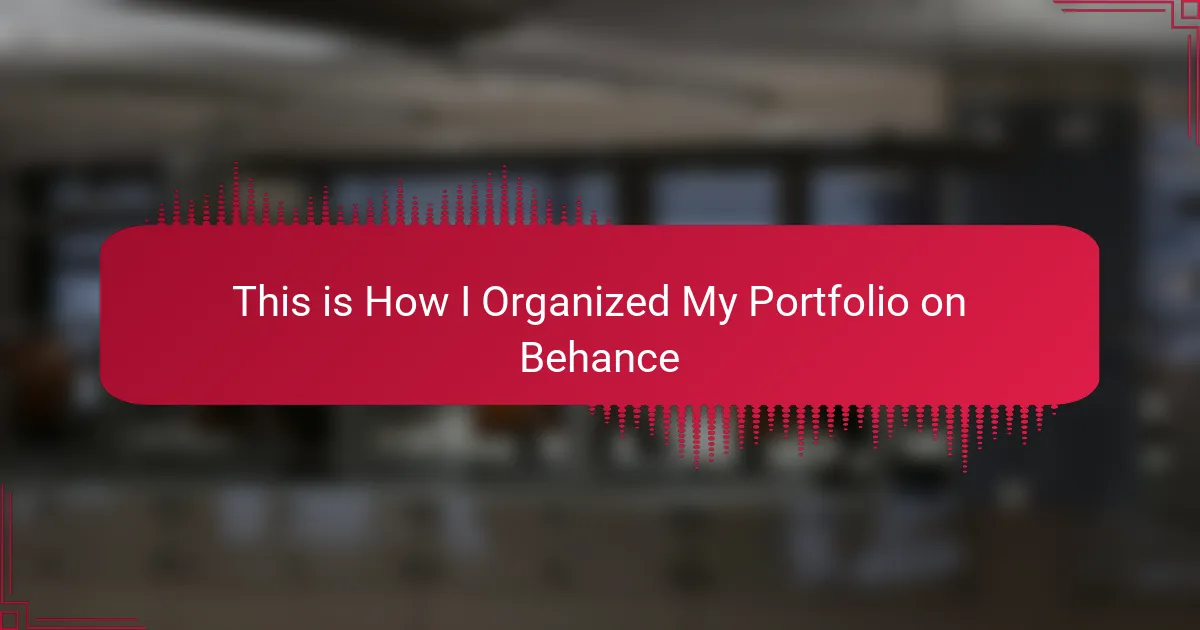Key takeaways
- A well-organized portfolio is essential for showcasing your creative identity and engaging potential collaborators or fans.
- Including a mix of finished works and behind-the-scenes content, such as sketches and drafts, helps reveal your artistic process.
- High-quality images and clear project descriptions enhance presentation and professionalism while reflecting personal growth.
- Engaging with your audience and sharing inspirations can foster connections and enrich your portfolio’s narrative.
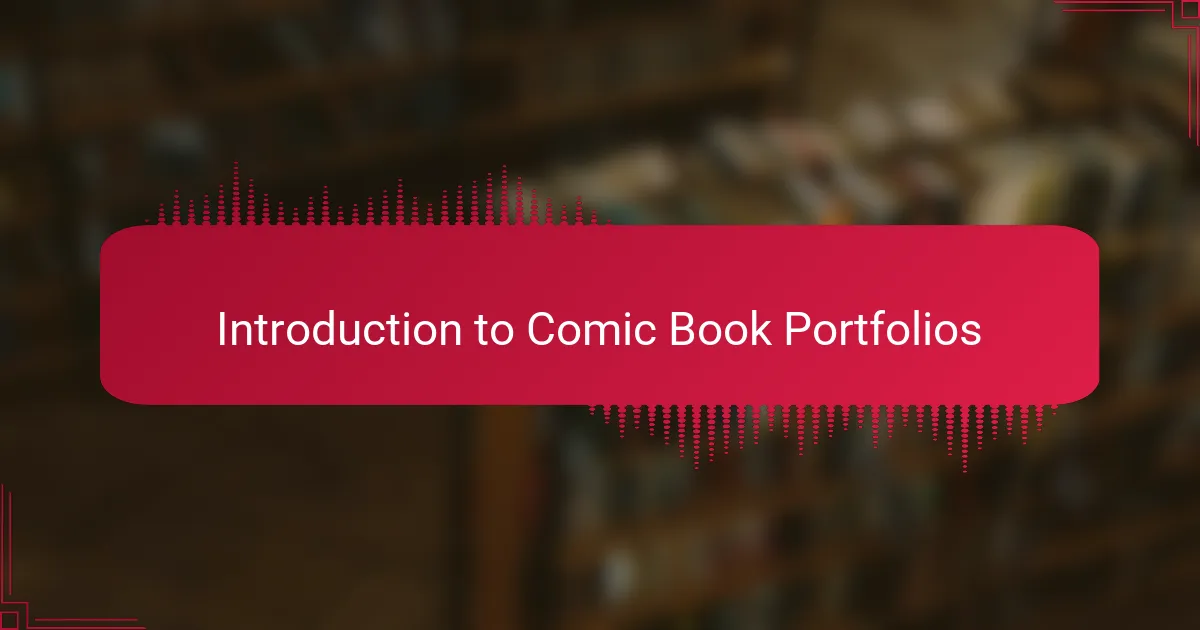
Introduction to Comic Book Portfolios
As I embarked on my journey as a comic book author, I quickly realized that a well-organized portfolio is essential. It’s not just a collection of my work; it’s my creative identity showcased for potential collaborators and fans. Have you ever wondered how you can visually translate your storytelling style?
Creating a comic book portfolio on platforms like Behance allows you to present your unique artistic voice effectively. I remember feeling overwhelmed by the options, but I soon discovered that clarity and coherence were my guiding stars. How can you make your work stand out in a sea of talent?
A strong portfolio tells your story and highlights your skills in a way that resonates with others. I’ve learned that it’s not just about displaying finished projects, but also about including concept art and sketches that reveal your creative process. What pieces of your journey do you want to showcase to captivate your audience?
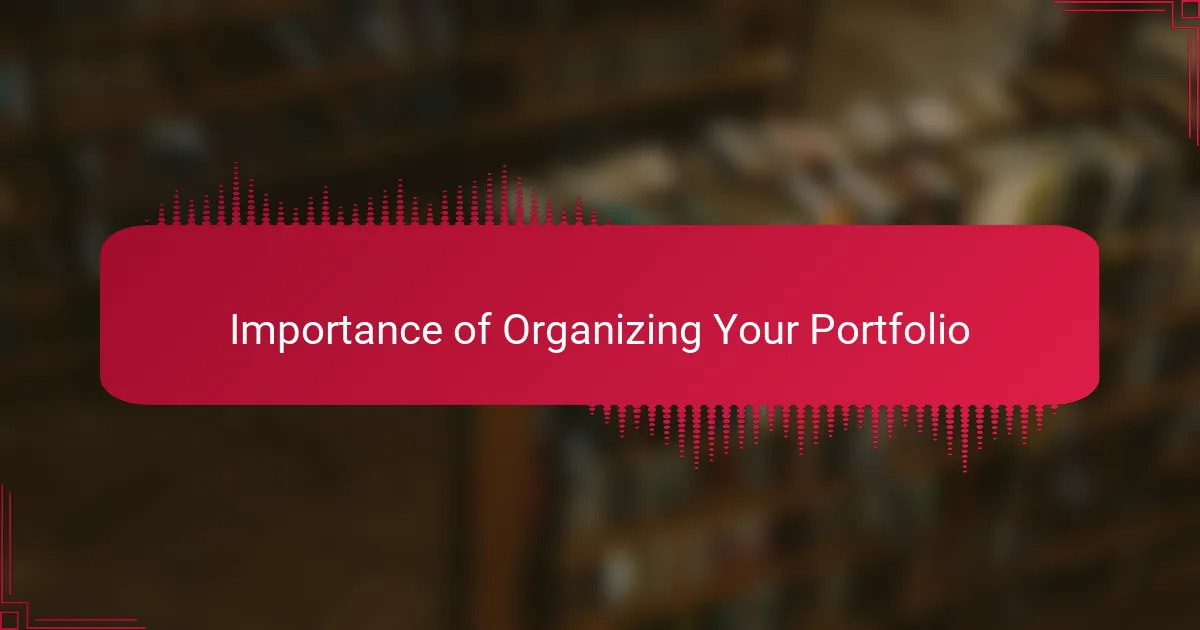
Importance of Organizing Your Portfolio
Organizing your portfolio is crucial for showcasing your work effectively. When I revamped mine on Behance, I noticed a significant difference in the way visitors engaged with my projects. A well-structured portfolio not only highlights your strengths but also tells a compelling story about your creative journey, which can resonate with potential clients or collaborators.
From my experience, a tidy and thoughtfully arranged portfolio provides clarity. It allows viewers to navigate through your work seamlessly, keeping them interested longer. I remember when I first started; chaotic presentations led to missed opportunities. By focusing on organization, I could create a more inviting atmosphere that encourages feedback and connection.
Here’s a quick comparison of organized versus disorganized portfolios:
| Organized Portfolio | Disorganized Portfolio |
|---|---|
| Easy navigation leads to higher engagement | Confusing layout may drive viewers away |
| Clear presentation of projects enhances professionalism | Messy display diminishes the impact of your work |
| Showcases a curated selection of your best work | May overwhelm with too many similar pieces |
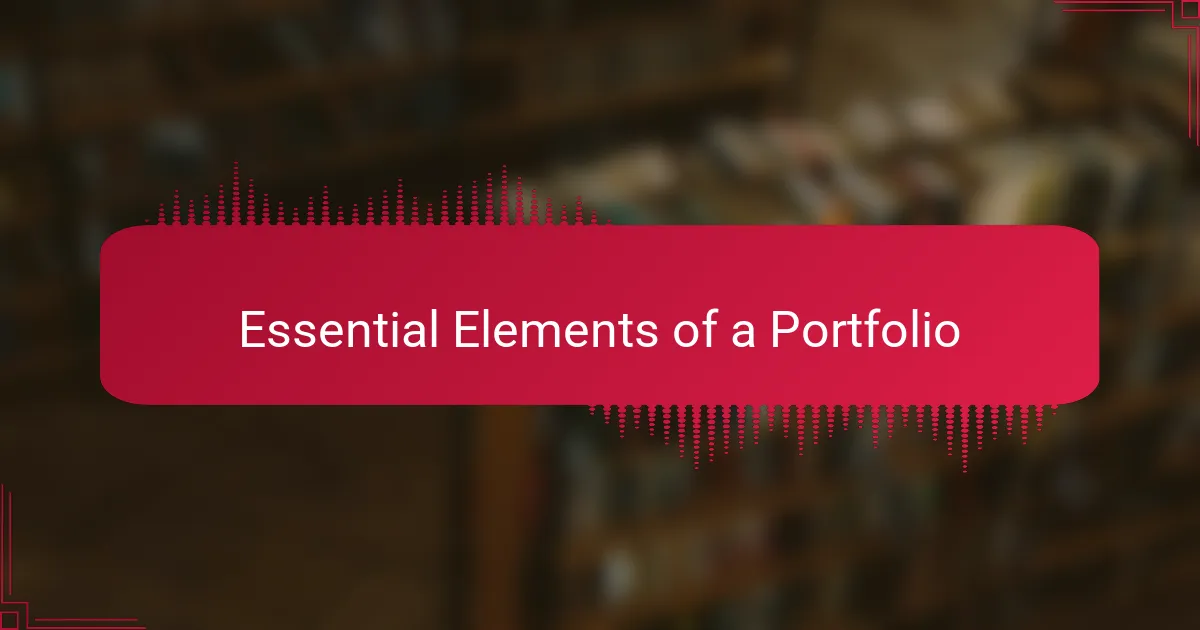
Essential Elements of a Portfolio
A well-structured portfolio includes a variety of elements that truly represent your creative journey. I’ve found that showcasing a mix of finished pieces and behind-the-scenes content is vital. Including sketches, storyboards, and drafts not only reveals my process but also invites viewers into my artistic mindset. Have you considered what story your art tells as it unfolds?
Curating the right selection of your work is equally important. Early on, I made the mistake of including every project I had ever worked on. It was overwhelming! Simplifying my portfolio to focus on my strongest pieces allowed me to present a more coherent narrative of my capabilities. What core themes or techniques do you want your audience to remember most?
Lastly, don’t underestimate the power of a compelling introduction or overview for each project. When I added context to my work—explaining my inspirations and the challenges I faced—it created a deeper connection with my audience. Have you thought about how sharing your personal experiences can enhance your portfolio’s impact?
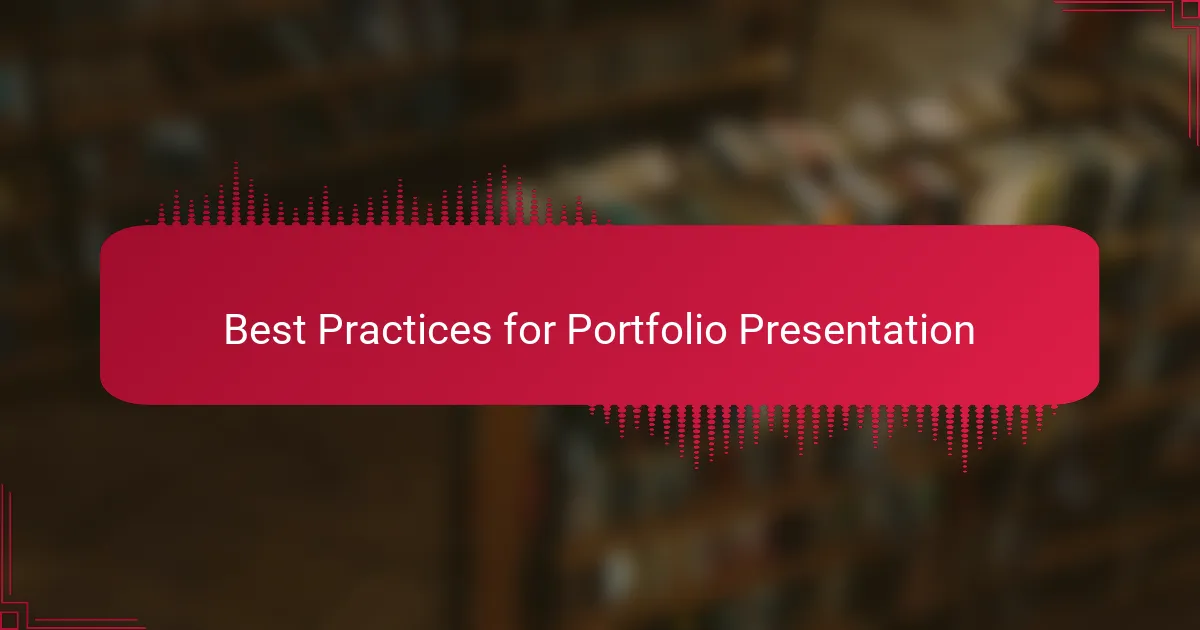
Best Practices for Portfolio Presentation
When it comes to presenting my portfolio on Behance, I found that organization is key. I always aim for a clean layout that allows my artwork to speak for itself. Including clear project descriptions has helped viewers understand not just the final product, but also the creative process behind it.
I also emphasize the importance of high-quality images. There’s nothing quite like the feeling of having my artwork shine when it’s displayed beautifully. I recall a time when I uploaded a series of lower-quality images and quickly realized it didn’t do justice to my work; since then, I prioritize image resolution above all.
Another essential practice is to curate my projects thoughtfully. I focus on showcasing only my best pieces, which reflects my growth as a comic book author. Each project in my portfolio is a story in itself, tying together my skills, styles, and evolution in the industry.
| Best Practice | Description |
|---|---|
| Organization | Clean layouts allow artwork to shine without distractions. |
| Image Quality | High-resolution images make a significant impact on presentation. |
| Curated Selection | Featuring only the best work reflects personal growth and style. |
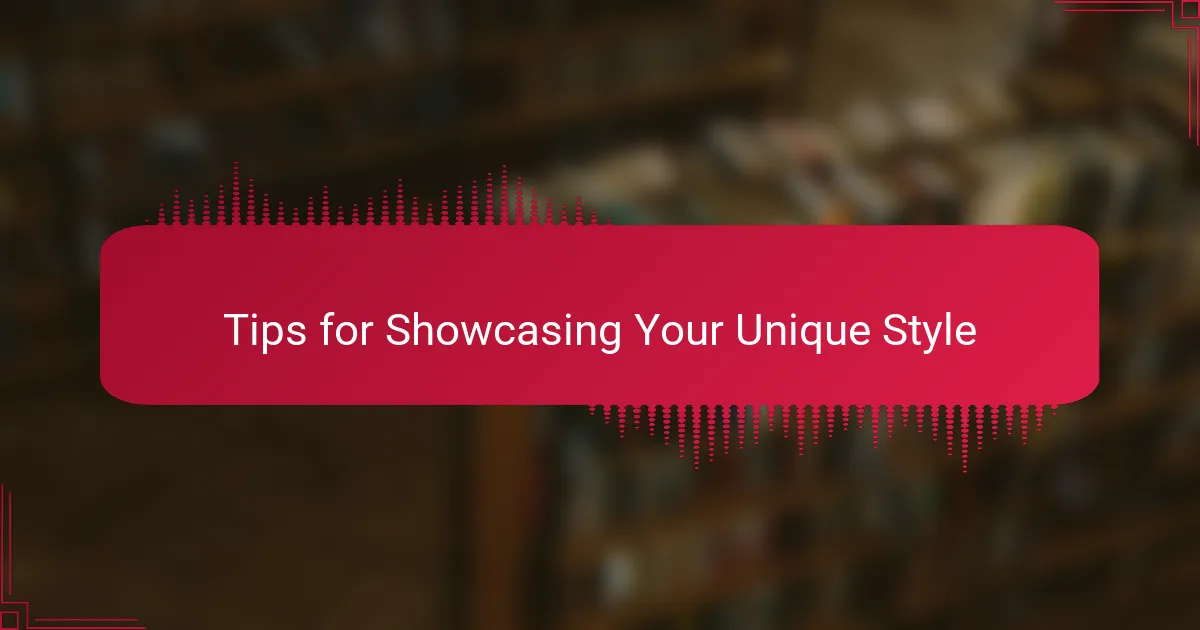
Tips for Showcasing Your Unique Style
Showcasing your unique style in your portfolio is all about authenticity. I remember the moment I decided to embrace my quirks instead of trying to conform to trends. It felt freeing to present work that truly reflected my voice, like a personal signature on each piece. Have you thought about what makes your style distinct, and how you can highlight it?
Incorporating different mediums and techniques can also elevate your portfolio. I often mix traditional sketches with digital pieces, creating a vibrant tapestry of my creative journey. This blend not only showcases my versatility but also invites viewers into the experimentation that defines my style. What mediums resonate most with you, and how can they tell your story?
Finally, don’t shy away from sharing your influences. I once included a short paragraph about the comics that inspired me alongside my projects, and the response was amazing. It sparked conversations and connections with fans and fellow artists who shared my interests. Could revealing your inspirations deepen your audience’s connection with your work?
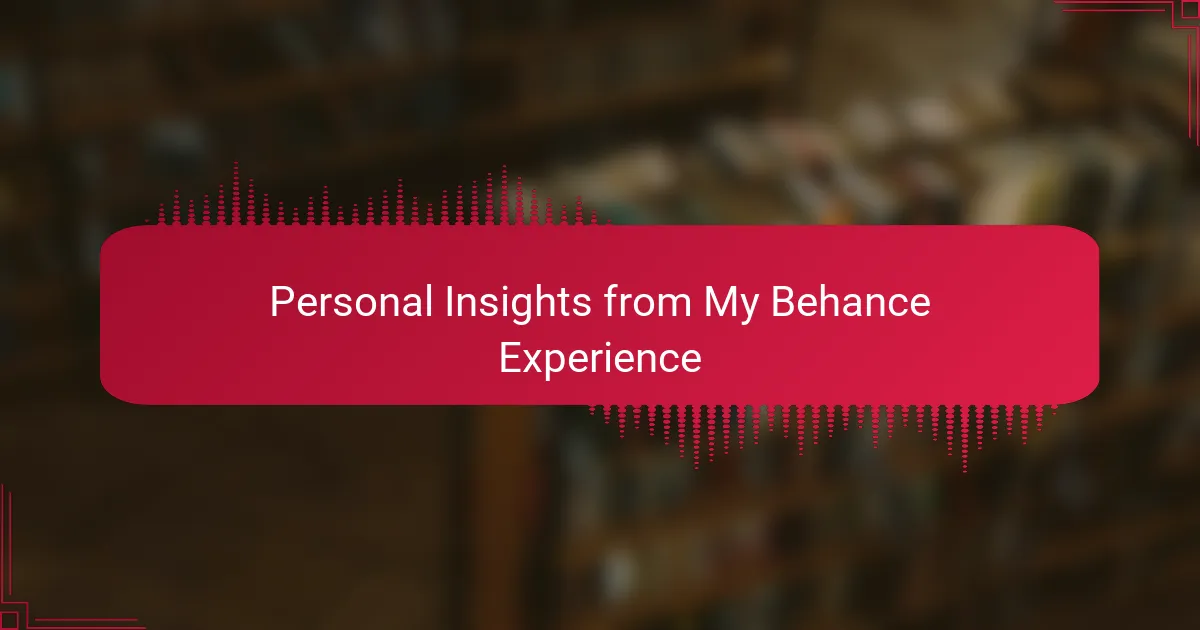
Personal Insights from My Behance Experience
When I first started using Behance, I struggled with how to present my work in a way that felt authentic yet professional. After some trial and error, I discovered that explaining the inspiration behind each piece allowed my personality to shine through. I still remember the thrill of receiving feedback on a project when I shared the backstory; it created an emotional connection with viewers that simply displaying artwork couldn’t achieve.
Over time, I realized that my portfolio is a dynamic reflection of my growth as a creator. I chose to include not just finished comic panels, but also sketches and color studies that reveal my artistic process. It felt rewarding to share those raw moments; they serve as stepping stones in my journey. Have you considered how your process can enrich the narrative of your portfolio?
Another insight I gained is the significance of community engagement on Behance. I was surprised by how much I learned from the comments and discussions initiated by my projects. This two-way conversation made my portfolio feel less like a solitary endeavor and more like a collaborative experience within the art community. Have you thought about how interacting with your audience can enhance your portfolio’s impact?
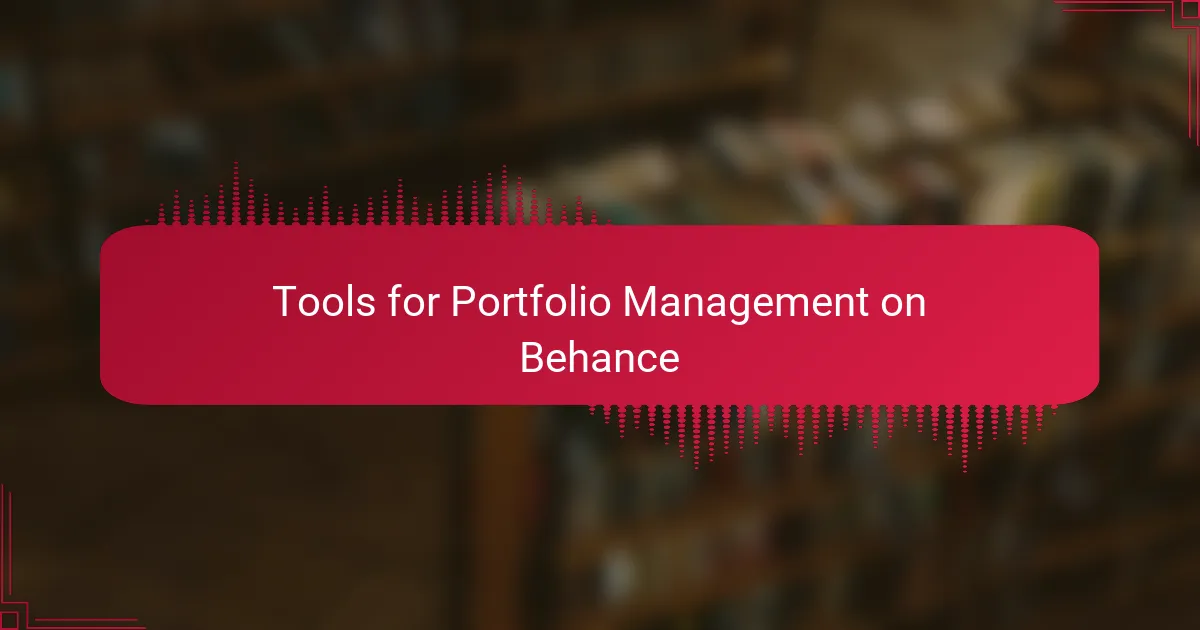
Tools for Portfolio Management on Behance
When managing my portfolio on Behance, I found that utilizing the right tools can make all the difference. For instance, the project upload feature is incredibly user-friendly and allows for customization. I remember the thrill I felt when I first saw my comic pages come to life on the platform, and a well-organized portfolio only amplified that excitement.
It’s essential to keep track of your projects and their performance. I often use Behance’s analytics to gauge the engagement my work receives. Analyzing which projects resonate most with viewers can direct my future creative efforts and improve my visibility. There’s something deeply fulfilling about seeing the numbers rise and understanding what my audience loves.
Here are some tools that I recommend for effective portfolio management on Behance:
- Project Upload: Easily add and customize projects with images and videos.
- Collections: Organize your projects into themed collections for better navigation.
- Analytics Dashboard: Monitor views, likes, and comments for understanding audience engagement.
- Creative Fields: Tag your work appropriately to enhance discoverability.
- Integration with Adobe Products: Seamlessly share your Adobe work, like Photoshop or Illustrator projects, directly to your portfolio.
